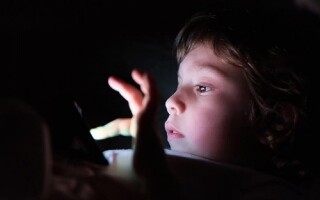
It is very important for parents to discuss their concerns that lead them to impose restrictions or prohibitions on the use of applications. German experts recommend that parents agree on fixed time periods for use and clear rules. For example, children may be allowed to use their smartphone for 30 minutes after school, then parents collect the device, and in the evening, they collect smartphones, tablets, and laptops, or agree that the child should leave them in a designated place to make it easier to monitor "the device user."
In the event of a child's ignoring these rules, parents should talk to them about the possible consequences. German experts suggested a temporary ban on smartphone use for an entire day, with the possibility of extending the term in case of violation. The Stiftung Warentest journal from Germany found that the usability of these features when using the function to limit screen time even in normal mode.
Experts noted that they encountered Apple on the subject of test results. The American company explained that content limitations for the Screen Time function apply primarily to its own applications, and other companies can use the mechanisms protected by Apple for content filtering, but are not obligated to do so. For example, for YouTube, parents should restrict inappropriate content using parental controls on the YouTube account.
Experts advise parents not to limit themselves to the functions of parental controls provided by Apple, but to use the options available in the Screen Time menu, which in many cases are effective. The magazine provides the following important recommendations: - Setting up the "Limited Access" mode for the child's device, allowing only necessary applications and protecting the mode with a code, so the child can only use the device in this mode. - Parents can manage their child's device through the Screen Time function so that the child cannot install applications independently or run applications with the corresponding age category. - Through the Screen Time function, parents can set temporary restrictions and age restrictions for applications, films, and other content. - Complete isolation of separate applications for children through the Screen Time function. - Disabling in-app purchases in applications through the Screen Time/Restraints function or allowing purchases with a password that the child does not know. - Parents should explore different points in the Screen Time function and adjust them according to their preferences.
The test of the German journal showed that some functions of parental controls work reliably, for example, the time limit function "works very well" in Apple applications in normal mode, i.e., without "Limited Access."
Parents need to create a family group and establish restrictions for their children through the Screen Time function, which includes temporary restrictions, age limits for films and music, connection rules, and application permissions. However, the journal's test showed that these restrictions can be bypassed. Children can use the simple "Limited Access" mode to bypass temporary restrictions and gain access to games and messengers even after the allowed time has elapsed. This function became available with the release of iOS 17 in September 2023. In addition to temporary restrictions, parents can also set restrictions based on age and content through the Screen Time function, such as banning inappropriate music or watching films, predetermined for an age category from 16 or 18 years.














